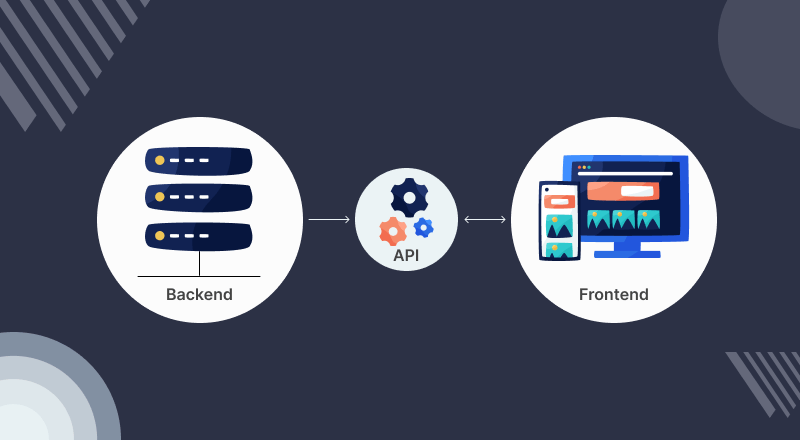Understanding Frontend, Backend, and APIs in Full Stack Development
 Shaikh Affan
Shaikh Affan
As a Full Stack Development student, you are learning how to build complete web applications, covering both the frontend and backend. One of the most important concepts in full stack development is understanding how the frontend, backend, and APIs work together. This article will help you strengthen your understanding of these core components.
1. Frontend – The User Interface
What is Frontend?
Frontend refers to the part of a web application that users interact with. It includes the visual design, buttons, forms, animations, and overall user experience. The goal of the frontend is to make the application user-friendly and responsive.
Technologies Used in Frontend:
In your course, you will learn various frontend technologies, including:
HTML (HyperText Markup Language) – The structure of a webpage.
CSS (Cascading Style Sheets) – Styling for colors, fonts, layouts, and animations.
JavaScript (JS) – Adds interactivity and logic to the frontend.
Frontend Frameworks & Libraries:
React.js – A popular JavaScript library for building dynamic user interfaces.
Vue.js – A lightweight and flexible frontend framework.
Angular – A framework for building complex web applications.
Example:
When you visit a website like YouTube, everything you see—videos, buttons, search bar, and comments section—is part of the frontend.
2. Backend – The Brain of the Application
What is Backend?
The backend is responsible for the logic, database management, authentication, and communication between the client (frontend) and the server. The backend processes user requests and sends appropriate responses.
Technologies Used in Backend:
Programming Languages:
JavaScript (Node.js)
Python (Django, Flask)
Java (Spring Boot)
PHP (Laravel)
Databases:
SQL Databases (MySQL, PostgreSQL)
NoSQL Databases (MongoDB, Firebase)
Backend Frameworks:
Express.js (for Node.js)
Django (for Python)
Spring Boot (for Java)
Example:
When you log into Instagram, the backend verifies your username and password by checking the database before allowing access.
3. APIs – Connecting Frontend and Backend
What is an API?
API (Application Programming Interface) acts as a bridge between the frontend and backend. It allows them to exchange data securely.
How APIs Work?
The frontend makes a request (e.g., "Get user profile details").
The API sends the request to the backend.
The backend processes the request and retrieves data from the database.
The API sends the response back to the frontend.
The frontend displays the data to the user.
Types of APIs:
REST API – The most common type, using HTTP requests (GET, POST, PUT, DELETE).
GraphQL API – A more efficient way to fetch only the required data.
Example:
When you use a weather app, it calls an API to get the latest weather data and displays it on your screen.
4. How Frontend, Backend, and APIs Work Together?
Imagine you are developing a food delivery app:
Frontend: The user searches for restaurants and places an order.
API: The request is sent to the backend via an API.
Backend: The backend processes the request, checks availability, and updates the order status.
Database: The order details are saved in the database.
API: The backend sends a confirmation response.
Frontend: The user sees a success message and order details on the screen.
This interaction is what makes Full Stack Development so powerful! 🚀
5. Conclusion
As a Full Stack Developer, you will master frontend (React, HTML, CSS, JS), backend (Node.js, Django, SQL), and APIs to build complete applications. Keep practicing, build projects, and explore real-world applications.
Subscribe to my newsletter
Read articles from Shaikh Affan directly inside your inbox. Subscribe to the newsletter, and don't miss out.
Written by

Shaikh Affan
Shaikh Affan
👋 Hey there! I’m a Frontend Developer & UI/UX Enthusiast from Mumbai, currently pursuing my BSc-IT at Kalsekar Technical Campus. I write about web development, Python, and AI, breaking down complex topics into easy-to-understand articles. My goal is to share knowledge, document my learning journey, and help others grow in tech. 🚀 Check out my latest articles and let's learn together!